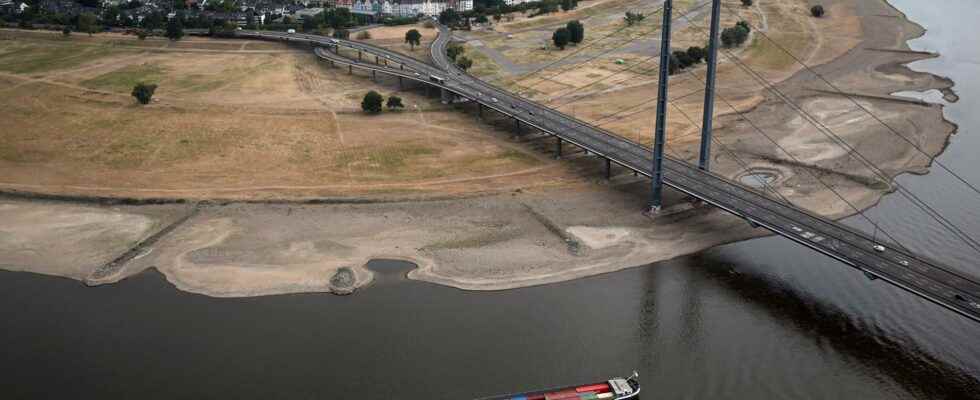Published: Less than 10 min ago
full screen
Next
A freighter on the Rhine through Düsseldorf earlier this week. The low water levels in the river now threaten German industrial production.
1 of 2Photo: Federico Gambarini/AP/TT
Throughout Europe, important rivers are drying up as a result of the heat and drought.
The crisis is described as the worst in Europe in 500 years. Now German industry is warning that the low water level in the Rhine can lead to a halt in production.
German factories may be forced to reduce production or even throttle it completely. The industrial association BDI issues that warning since the water in the Rhine has dropped to critically low levels, which makes heavier barge transport impossible.
At the mirror in Kaub, about four miles south of Koblenz, the water level in the river, which is usually a few meters deep, measures only 34 centimeters. The reason is the high temperatures and the lack of precipitation, which is also drying up the Danube, the Thames and the Po.
In 2018, traffic on Germany’s most important waterway was suspended when the water level was as low as 28 centimeters. The bill for the six-month stop landed at over SEK 50 billion, according to calculations. Should the traffic be stopped again, this would also have consequences for Sweden, as the barges transport large quantities of goods and fuel from the Ruhr area and the industrial regions in western Germany.
Both chemical giant BASF and steel producer Thyssen have already cut production sharply, largely due to the lack of available transport.
– The ongoing drought and the low water levels threaten the industry’s security of supply, says Holger Lösch at BDI to the AP news agency.
Difficult to replace transport
– It is only a matter of time before the facilities of the chemical and steel industry have to be closed, crude oil and building materials do not arrive, and means of transport with high capacity and for heavy goods can no longer be used.
Changing freight routes and using rail or road transport instead is difficult, due to accessibility problems and driver shortages, according to BDI. The picture is confirmed by Johan Woxenius, professor of maritime transport economics and logistics at the School of Economics at the University of Gothenburg, who describes the situation as serious.
– They had better reserve capacity during the drought in 2018. Today, everything is very strained. Everything is based on getting raw materials fairly continuously, and then shipping out processed products. Then many more tonnes of raw materials are required than what you get out, so it is above all the deliveries that are troublesome, he says.
– The main reason for this is on the personnel side. You can probably get trucks, but it is difficult to hire drivers to drive them.
Disrupt large container flows
Disruptions to river transport not only cause problems in Germany, but also disrupt global container flows, as the system is linked to the major ports of Rotterdam and Antwerp.
– If the containers remain in Rotterdam, the terminals will be full very quickly, and then other boats cannot unload and load, says Woxenius.
In the future, the problem of dried up rivers can be assumed to get worse in view of climate change, he says.
– About half of the water in the Rhine comes from rain, and half from snow and glacier melting in the Alps. And if it is the case that the glaciers become smaller and smaller and eventually do not exist at all – well, then that part is ultimately not to be counted on.
Facts
Rhine
The Rhine flows from the Alps in eastern Switzerland to the North Sea, and is estimated to be about 123 miles long – albeit with some variation.
The Rhine partially forms the border between Germany and Switzerland, as well as between Germany and France.
The Rhine stretches north through western Germany and divides in the Netherlands, forming a delta with the Maas and the Scheldt that flows into the port city of Rotterdam.
The Rhine is one of the world’s busiest waterways and is connected by canal to most of the major Central European rivers.
The river was heavily polluted in the 1970s, when almost all the fish died out and the water was directly dangerous for humans. After extensive efforts, the water quality has returned to an almost normal level.
Source: NE
Read more
